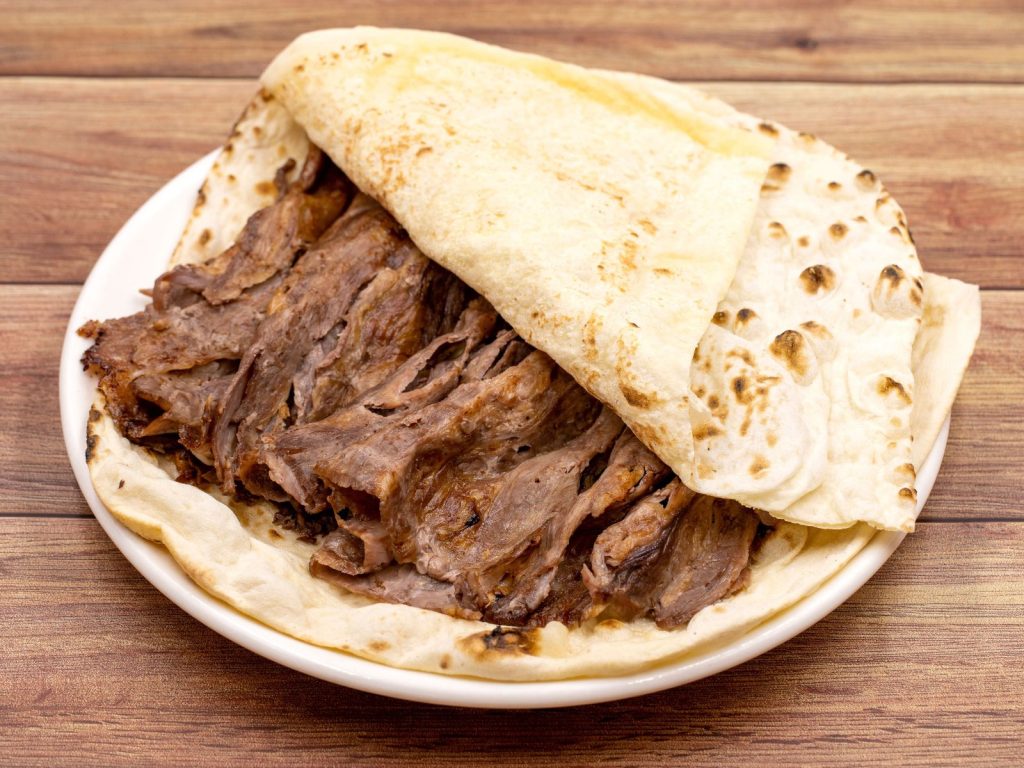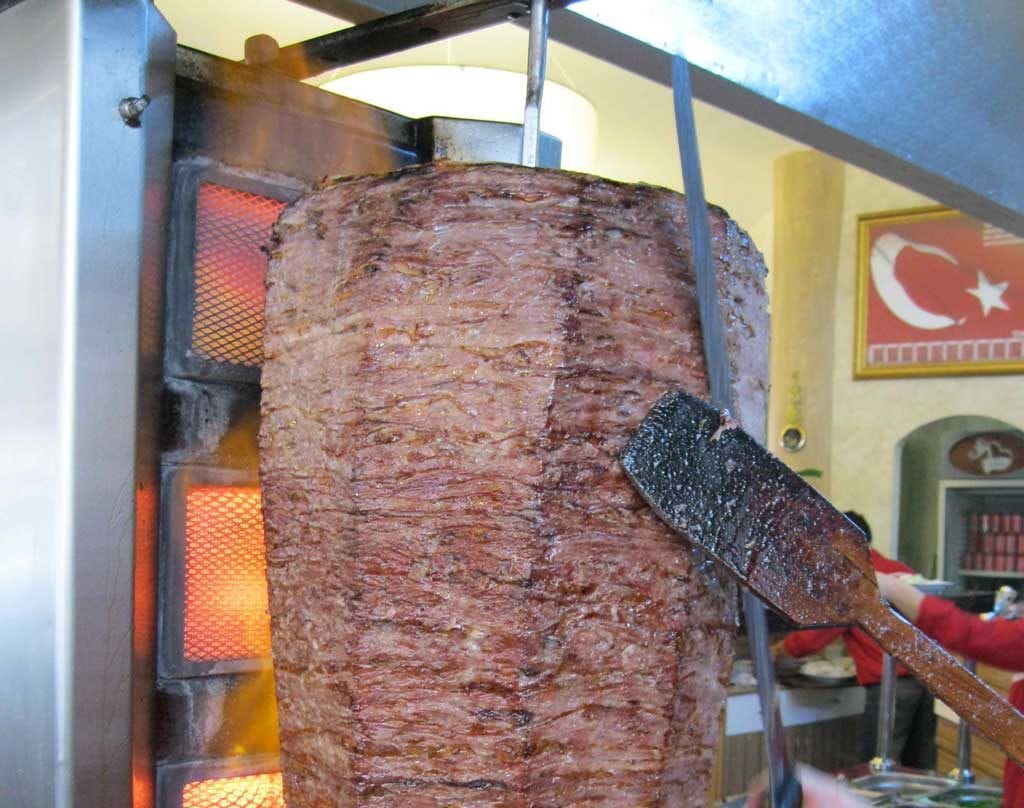Istanbul and the Kebab Culture
In the 1980s, tourists visiting Istanbul often associated the city with three essential experiences: rakı, shish kebabs, and the city’s vibrant atmosphere. From an Orientalist perspective, kebabs were considered the quintessential dish of Istanbul and Anatolia, representing the culinary soul of the East.
Today, kebab culture is stronger than ever. With the rise of fast food and a fast-paced lifestyle, the number of kebab restaurants has surged—across Anatolia, Europe, and wherever Turks have settled. From Adana kebab to Urfa kebab and Bursa‘s famous Iskender kebab, regional varieties continue to flourish.

Properly sliced “yaprak” (leaf) döner
A Surprising Claim: Did Kebab Originate in Izmir?
Researcher and collector Nejat Yentürk recently made a bold statement that challenges long-held beliefs: kebabs might have originated not in the East, but in Izmir. Historical records from the 19th century refer to “Izmir kebab” when discussing the kebab culture in Istanbul.
This raises an intriguing question: Who first introduced kebab, and when did it become associated with the East?
Izmir’s Culinary Heritage: More than Boyoz and Kumru
When people think of Izmir cuisine, they often imagine delicious street foods like boyoz, kumru, kokoreç, gevrek (simit), stuffed mussels, and lokma pastries. But in the 19th century, Izmir was also renowned for its kebabs.
Nejat Yentürk points out that historical texts discussing Istanbul’s culinary culture mention “Izmir kebab” several times—evidence that Izmir played a major role in early kebab history. Today known for its authentic street food, Izmir may in fact be the overlooked birthplace of this beloved dish.
The Origins of Döner Kebab: From Kastamonu to Istanbul
When it comes to döner kebab, the story gets even more complex. Though hamburgers dominate the global fast-food scene, döner kebab—with its juicy layers of meat, internal fat, and spice blends—is increasingly recognized for its natural flavor and traditional preparation.
The earliest version of döner kebab is believed to have been made in Kastamonu over 150 years ago. A chef named Hamdi invented the vertical cooking technique using a custom metal assembly. His apprentices, such as Şükrü Gülsunar, helped spread the method throughout Anatolia.
Historical Evidence: Evliya Çelebi and the Döner of Crimea
An intriguing anecdote comes from Evliya Çelebi, the famous Ottoman traveler. During his visit to Crimea, he described an evening meal of sliced meat on iron skewers, served with helva and wine—a combination that mirrors the structure of today’s döner kebab, though it wasn’t yet known by that name.
The Global Journey of Döner: From Ottoman Roots to German Streets
In recent decades, Germany has become one of the most visible modern homes of döner kebab, especially through the rise of Berlin-style döner—a fast-food sandwich variation typically served with salad, sauces, and pita or flatbread. Many Germans today regard döner kebab as a German invention, attributing its modern form to Kadir Nurman, a Turkish immigrant who popularized it in Berlin in the 1970s. While it’s true that the modern döner sandwich as a fast food product gained traction in Germany, the origins of the dish go back centuries in the Ottoman Empire. This claim reflects more of a reinvention or adaptation than true invention, echoing broader patterns of culinary migration and transformation.

Kadir Nurman
Linguistically, the word “döner” comes from the Turkish verb “dönmek”, meaning “to turn” or “to rotate,” referencing the vertical rotating spit used to cook the meat. Similarly, the older Ottoman Turkish term “çevirme” (meaning “turning” or “rotating”) was historically used to describe meat cooked on a horizontal spit. These Turkish terms are closely related to the Arabic “shawarma” (from the root š-w-r, meaning “to turn”), which refers to a similar method of preparing seasoned meat on a rotating skewer. Thus, döner, çevirme, and shawarma are culinary cousins, sharing both linguistic roots and roasting techniques, shaped by centuries of exchange across the Middle East and the Mediterranean.

Despite the history in different countries, döner brings people together, never drives them apart.
The First Photograph of Döner Kebab in History
Amid debates about döner’s true origins, one fact stands out: the first known photograph of döner kebab was taken in Istanbul in 1855 by James Robertson. The image depicts a vertical spit, a master, and an apprentice—clear evidence that Istanbul was an early hub for this iconic dish.

First known picture of döner stall in Istanbul (1855)
Rethinking the Origins of Kebab
From Izmir kebab in 19th-century Istanbul to döner kebab stalls photographed in the Ottoman capital, the true origins of kebab in Turkey are deeply intertwined with regional cuisines, street food culture, and culinary innovation. While Istanbul and Anatolia have long been associated with kebab culture, Izmir’s historical role deserves recognition as well.
Whether you’re tasting Adana, Iskender, or Izmir kebab, you’re not just enjoying a meal—you’re savoring centuries of Turkish culinary heritage.
